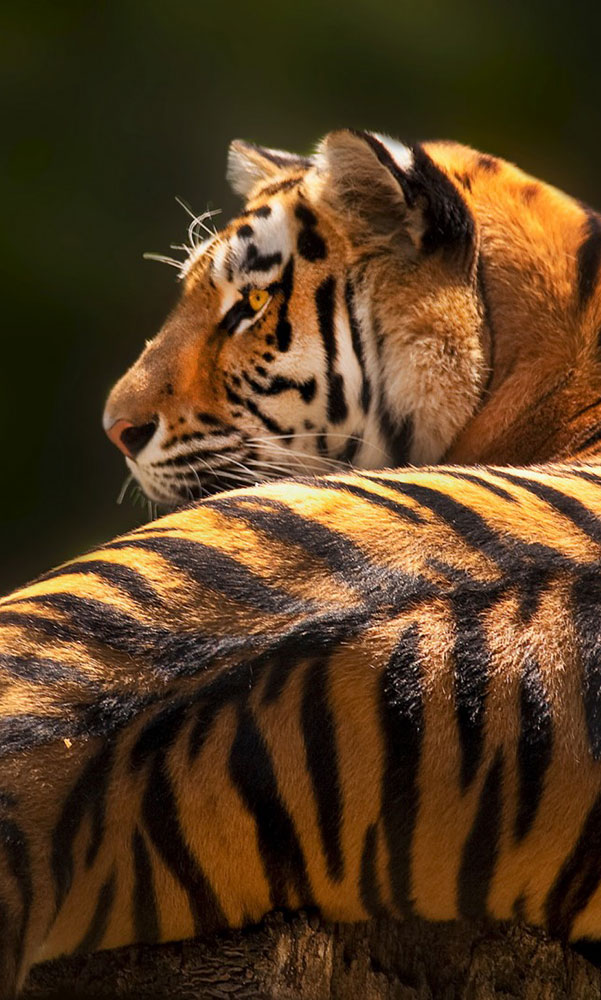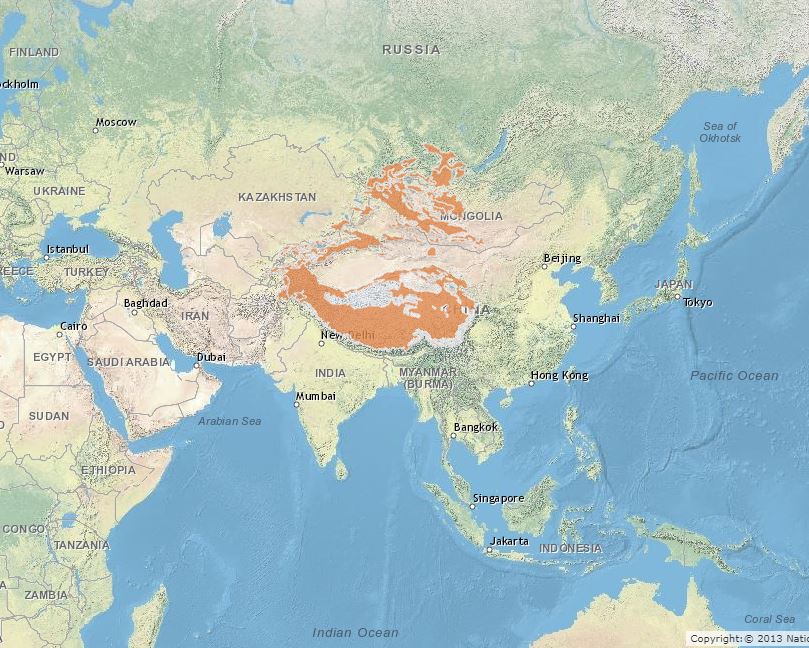

Seneca Park Zoo is home to two snow leopards, a male named Kaba, and a female named Timila. Kaba was born in May of 2010 and came to the Zoo in 2011 from the Cape May County Zoo in New Jersey. Timila came to the Zoo in March of 2018 from Metro Richmond Zoo in Virginia, where she was born in May 2016. Their first offspring, Silver, was born to mom Timila on May 27, 2019 and now resides at Rolling Hills Zoo in Kansas. Their second, Kenji, was born April 16, 2021 and now resides at Calgary Zoo, Canada.
Snow leopards eat wild sheep and goats, but are known to eat small animals such as rodents, hares and game birds. They stalk their prey and spring from a distance of 30 to 50 feet. Their limbs help them leap up to 30 feet, six times their body length!
International Union for Conservation of Nature (IUCN) Red List status
Their range spans Afghanistan, Kazakhstan and Russia in the north, to India and China in the east. China contains about 60% of snow leopard habitat. They have already disappeared from certain parts of Mongolia, part of their historic range.
The snow leopard is very rare in most of its range, with an estimated 3,500 to 7,000 remaining in their natural ranges, and 600 to 700 in zoos worldwide. They are also listed under the Endangered Species Act of 1972 and included on CITES Appendix I. Poaching for traditional customs, lack of prey, conflicts with herders, loss of habitat and the effects of climate change are the cats’ major threats..

Seneca Park Zoo Society is a tax-exempt 501(C)(3) nonprofit organization. Your gift is tax-deductible as allowed by law.
Seneca Park Zoo is a smoke-free facility.
Copyright © Seneca Park Zoo 2025